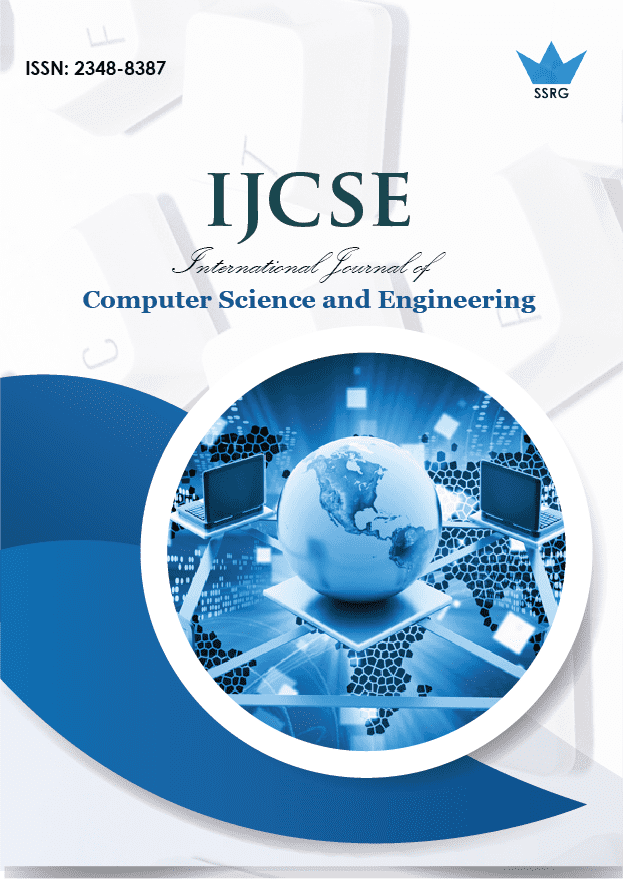Transfer Learning-Based Convolution Neural Network for Differentiation between Benign and Malignant Cancer Cells Using MobileNetV2

| International Journal of Computer Science and Engineering |
| © 2025 by SSRG - IJCSE Journal |
| Volume 12 Issue 7 |
| Year of Publication : 2025 |
| Authors : Goutam Sarker |
How to Cite?
Goutam Sarker, "Transfer Learning-Based Convolution Neural Network for Differentiation between Benign and Malignant Cancer Cells Using MobileNetV2," SSRG International Journal of Computer Science and Engineering , vol. 12, no. 7, pp. 24-30, 2025. Crossref, https://doi.org/10.14445/23488387/IJCSE-V12I7P103
Abstract:
The accurate classification of medical images plays a pivotal role in early cancer diagnosis and treatment planning. This study presents a robust image classification framework leveraging transfer learning with MobileNetV2 for binary classification of histopathological images as benign or malignant. The proposed model incorporates data augmentation, dropout regularization, and batch normalization to address overfitting and enhance generalization on limited datasets. The model is evaluated using a confusion matrix and performance metrics. Furthermore, the model is extended to predict unknown samples from a dedicated prediction folder. The results demonstrate high classification accuracy of 80% with low validation loss of 0.6501, indicating the effectiveness of the transfer learning strategy in medical image diagnostics.
Keywords:
Transfer Learning, MobileNetV2, CNN, Cancer Classification, Benign, Malignant, Image Augmentation, Confusion Matrix, Medical Imaging, Binary Classification.
References:
[1] M.A. Al-Masni et al., “Detection and Classification of the Breast Abnormalities in Digital Mammograms via Regional Convolutional Neural Network,” 2017 39th Annual International Conference of the IEEE Engineering in Medicine and Biology Society, Jeju, Korea (South), pp. 1230-1233, 2017.
[CrossRef] [Google Scholar] [Publisher Link]
[2] Sinno Jialin Pan, and Qiang Yang, “A Survey on Transfer Learning,” IEEE Transactions on Knowledge and Data Engineering, vol. 22, no. 10, pp. 1345-1359, 2010.
[CrossRef] [Google Scholar] [Publisher Link]
[3] Mark Sandler et al., “Mobile NetV2: Inverted Residuals and Linear Bottlenecks,” Proceedings of the IEEE Conference on Computer Vision and Pattern Recognition, pp. 4510-4520, 2018.
[Google Scholar] [Publisher Link]
[4] Goutam Sarker, and Swagata Ghosh, “A Set of Convolutional Neural Networks for Person Identification with Different Biometrics,” International Journal of Advance Computational Engineering and Networking, vol. 7, no. 6, pp. 41-47, 2019.
[Google Scholar] [Publisher Link]
[5] Goutam Sarker, “Some Studies on Convolution Neural Network,” International Journal of Computer Applications, vol. 182, no. 21, pp. 13-22, 2018.
[CrossRef] [Publisher Link]
[6] Goutam Sarker, and Swagata Ghosh, “A Convolution Neural Network for Optical Character Recognition and Subsequent Machine Translation,” International Journal of Computer Applications, vol. 182, no. 30, pp. 23-27, 2018.
[CrossRef] [Google Scholar] [Publisher Link]
[7] Clément Farabet et al., “Hardware Accelerated Convolution Neural Networks for Synthetic Vision Systems,” Proceedings of 2010 IEEE International Symposium on Circuits and Systems, Paris, France, pp. 257-260, 2010.
[CrossRef] [Google Scholar] [Publisher Link]
[8] Andrej Karpathy et al., “Large Scale Video Classification with Convolution Neural Networks,” IEEE Conference on Computer Vision and Pattern Recognition, pp. 1725-1732, 2014.
[Google Scholar] [Publisher Link]
[9] Goutam Sarker, and Swagata Ghosh, “Biometric Based Unimodal and Multimodal Person Identification with CNN using Optimal Filter Set,” International Conference on Artificial Intelligence, Global AI Congress, pp. 17-31, 2019.
[CrossRef] [Google Scholar] [Publisher Link]
[10] Goutam Sarker, “A Survey on Convolution Neural Networks,” IEEE Region 10 International Conference, Osaka, Japan, pp. 923-928, 2020.
[CrossRef] [Google Scholar] [Publisher Link]

 10.14445/23488387/IJCSE-V12I7P103
10.14445/23488387/IJCSE-V12I7P103